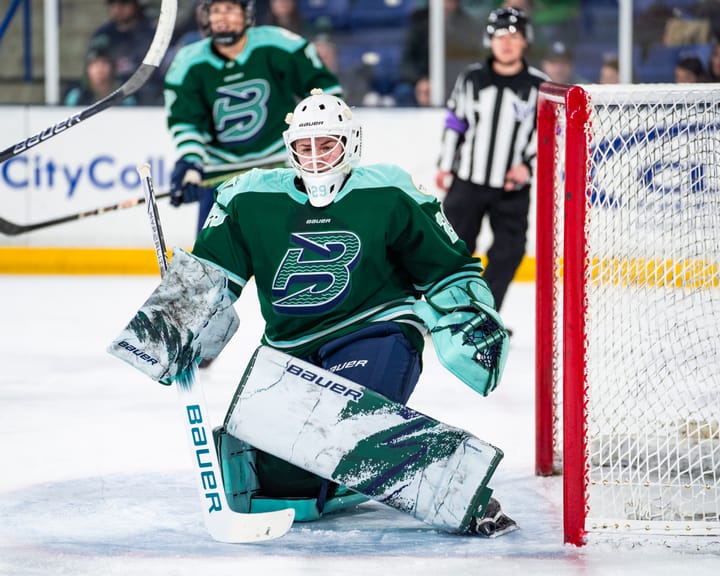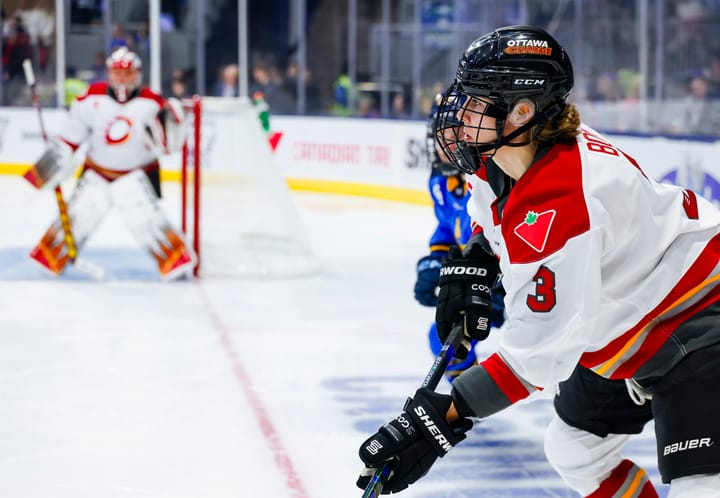What’s next for Russia?
Following their best Olympics finish ever, the Russian program has some serious potential. How can they build on their current momentum?
Before this year, the Olympic semifinals were but a dream for Russian women’s hockey.
They didn’t qualify for the 1998 Olympics, failed to get out of their group in 2002, 2006, and 2010, and lost to the Swiss in the quarterfinals in 2014. And after a group stage that saw them score one goal and concede 15, you’d be forgiven for doubting them.
But with their 6-2 win over Switzerland in the quarterfinals in Pyeongchang, they reached the medal round, and though they fell to Finland in the bronze medal game, they showed very well against teams besides the US and Canada.
So where does this program go from here?
The Player Pool
For starters, much of this team isn’t going anywhere. The only players on this team who won’t at least be in the running for Beijing 2022 are goaltender Nadezhda Alexandrova (who will be 36 in 2022) and defender Svetlana Tkachyova (who will be 37), two players who were used rather sparingly (Alexandrova came on in relief twice, and Tkachyova averaged only six and a half minutes of ice time per game). I would also not be surprised to see Iya Gavrilova and Alexandra Vafina, who were not on the Olympic team, out of the pool by then.
Looking at who may replace them, the first place to look is the under-18s, who beat Canada last month and has played for bronze five years in a row.
Up front, 16-year-old Ilona Markova was on the tournament all-star team, while Maria Alexandrova and Oxana Bratisheva both showed well as well. But the one to watch up front for me from the U18s is Yelena Mezentseva. Though she hasn’t pointed in either U18 tournament she’s played in, last year she posted 24 points in 36 games for Biryusa Krasnoyarsk in the domestic league as a 15 year old. I would also look at Mezentseva’s teammate, Yekaterina Dobrodeyeva, who has been over a point per game this season after posting 25 points last year. Both Dobrodeyeva and Mezentseva had to step up last season with Valeriya Pavlova, Biryusa’s best player, out on maternity leave. Come Beijing, much of the players from this year’s squad will be in their mid-20s, so it’ll be interesting to see how they develop over the next four years.
On the blueline, there is one player on the Olympic squad who did not compete in Pyeongchang, and that is Anastasia Chistyakova, who came down with appendicitis on the eve of the tournament. Back to the U18s, Yelena Provorova showed some signs on the blueline offensively and defensively at last month’s tournament, and was named the team’s best defender.
In goal, two players that may garner a look in 2022 are Diana Farkhutdinova and Valeriya Merkusheva. Farkhutdinova, the goalie in that famous win over Canada, was sensational during the tournament, posting a .925 SV%, and Merkusheva has had a breakout year in the domestic league, with a .953 SV% so far this season for Dinamo St. Petersburg. But they will have stiff competition with Nadezhda Morozova, Valeriya Tarakanova, 2014 Olympian Anna Prugova, and Mariya Sorokina, who was on the 2015, 2016, and 2017 World Championship squads.
The Domestic League
The Women’s Hockey League has seen some serious growth in the last few years. According to Russian NT captain and Agidel Ufa star Olga Sosina, teams have gone from playing in front of only “friends and family” to seeing attendances of 500, which isn’t terrible. In addition, last month’s Women’s U18 Worlds in Dmitrov saw the best attendances ever in that competition in Europe. The WHL all-star games have also drawn well; last year’s in Ufa saw over 7,000 attendees and last month’s in Astana saw just over 4,000 (not bad for a market with no team in the league). The market is clearly there for women’s hockey in Russia, and KHL sanctioning has helped the women’s league immensely - the WHL and KHL recently announced a three-year extension to their partnership. This partnership has done wonders for marketing and promotion of women’s hockey and has made it much easier to follow.
Next year will almost certainly see expansion to the league, too. Askar Shopobayev, president of KHL side Barys Astana, recently stated that the budget is in place to move Barys’s sister club, women’s hockey side Tomiris Astana, to the Russian women’s league, and KHL VP Georgi Koblyansky confirmed that a deal is close. With regards to Tomiris, though, that team would more than likely become a base club for the Kazakh national team the way Barys is on the men’s side. The league, which currently sits on seven teams (eight if Tomiris happens), plans to expand to ten teams by 2023. Well, that’s one down, but the league will likely target Russian markets with slots #9 and #10. But after the Dynamo Kursk fiasco (where the expansion club folded on the opening day of the 2016/17 season due to a lack of infrastructure and sponsors), it’s likely they will only expand for the right market at the right time. One place to look for potential new teams could be the amateur League of Women’s Hockey.
This will also be the first year that the domestic league has a playoff, with the top four teams qualifying. The potential drama of the playoffs (as opposed to just crowning the top team in the league as champs, which at the moment is Agidel, who leads by 12 points) could also result in an uptick in intrigue, especially after a solid Olympic result.
And in at least one of its current markets, the Olympics have definitely led to a spike in interest. League leaders Agidel only drew around 500 fans for their last series before the Olympics, against SKIF Nizhny Novgorod. When they came back on March 10 to take on Dynamo St. Petersburg, the crowd at Ice Palace Salavat Yulaev was reported at 1500.
Now, attendance in some other markets are still struggling, but Agidel is proving that there is potential for solid growth. Utilize it.





Comments ()